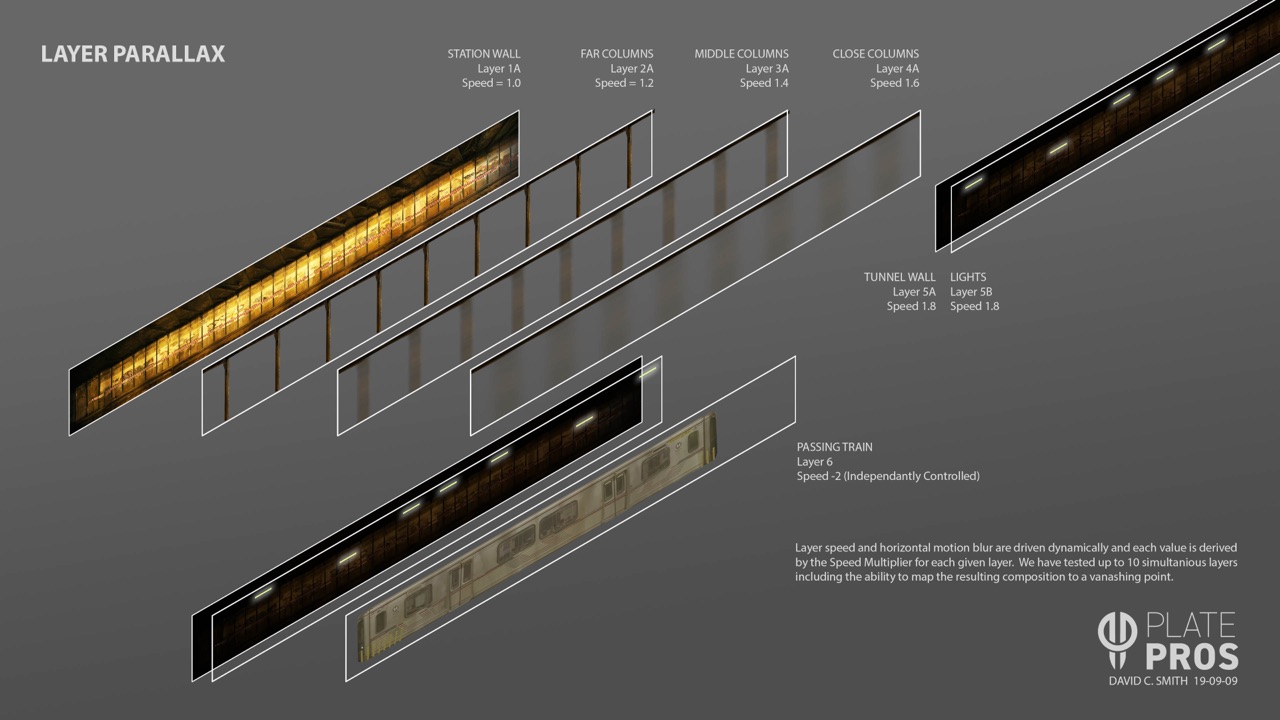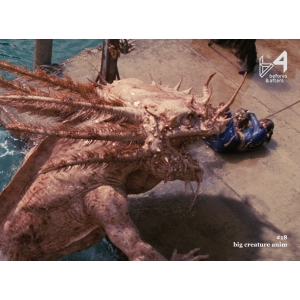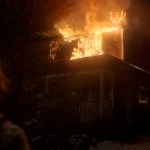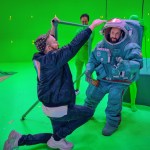Photographic and virtual environment specialists PlatePros on what’s involved on set in filming car process plates and other camera array shoots. An excerpt from befores & afters magazine.
Whenever you see an action fight scene taking place on a train, or a lead character driving through the streets of a European city, it’s often the case that outside the train or car windows is a virtual environment, with the actors filmed in a controlled and repeatable set piece environment or, more recently, on an LED stage.
That virtual environment out the windows may come from live action photographic plates stitched together (all the way up to 360 degrees) that have been shot by an array of cameras specially rigged to a vehicle, or it might be a completely synthetic environment modeled to resemble array plates.
Either way, these array or process plates are commonplace in visual effects, and their applications extend also to created backgrounds for, say, rooftop fight scenes, or stadium crowd shots, and for elements that can be used inside LED wall volumes.
So, how do these environments tend to get captured? One company offering both array shooting services and stock environment footage from array shoots is PlatePros. They’ve worked on projects such as Joker, Creed II, The Girls on the Bus and the upcoming Penguin series. befores & afters walks through PlatePros’ process with founder and CEO David C. Smith to see how array or process plates tend to be filmed.
Discovering process plates
Smith first came across the world of process plates while working on the Knight Rider reboot around 2005, when he was running an independent production company. “Some friends of mine were hired to do the graphics of the heads-up display on KITT, the robotic car. Through a series of production events, they were unable to get the material behind their graphics, which is the view out the front windshield. So because I had insurance and a production company and we were college friends, they said, ‘Hey, can you go shoot us the view out the front windshield?’ At that time, I didn’t realize what that was. It was a process plate, a driving plate.”

That led Smith’s company at the time to pursue more of that process plate work, including on season six of the TV series Weeds in 2010. Back then, Smith says those plates were being filmed “in the traditional way with a single camera hanging off of a camera car fitted with a platform and a stabilized head. We’d shut down a road and we’d drive up and down that road all day long to get one little stretch of road.”
This was a time-consuming process, and one that involved re-driving over pieces of road, with the risk that the lighting and state of the road environment changing over time. That changed with the advent of smaller format cameras.
“Small DSLR’s and mirrorless cameras started being able to shoot good high quality video,” advises Smith. “We realized that rather than shooting one camera and going up and down the same road multiple times, we could have multiple cameras on the car, but also make it portable. That became the first car array that we built with the intent of it being able to travel as a suitcase in a carry-on, which means we could do this work anywhere in the world.”
An array of arrays
Smith’s PlatePros now offers several different shooting array setups depending on client needs, but they mainly offer two alternatives; dubbed Gen 2 and Gen 3. “Gen 2 is our travel array,” details Smith. “It is designed to be able to attach to any normal production vehicle and fit in a couple of suitcases. That means that we can load it on a plane and fly wherever you need to acquire the plates, put it on a rental car or a production vehicle, and acquire those plates that way. It’s a hard mounted array, so it’s only relying on the stabilization built into the lenses of the camera, which means the style of motion in the footage is a little bit more raw. You feel like you’re on the vehicle.”

The portability of the Gen 2 array has a trade-off in terms of crafting a 360 stitch out of that array. This is because, as Smith explains, “we need to have a camera on the front of the car and cameras on the back of the car to allow us to get 360 coverage, but we still need to get low enough to match the eyeline of the driver. So, on a normal car, the middle section is in the way, and we have to break the array into pieces to be able to accommodate that height. When we break it into pieces, it’s now less optimal for 360 stitching.”
That issue is overcome by PlatePro’s Gen 3 shooting array, which relies on a customized vehicle for filming. “It’s known as an autocycle,” says Smith. “It’s a three-wheel vehicle–legally it counts as a motorcycle that gained a wheel instead of a car that lost one. That means that it doesn’t have to adhere to the same protocols as a passenger vehicle. With a driver with a full face shield, we don’t have to contend with a windshield in front of the cameras. It allows us to get our array central to the vehicle and much, much lower.”
The Gen 3 array also features three layers of active stabilization. First, the array mount allows for 14 inches of balanced vertical suspension which tames large bumps in the road. This suspension is supporting an Alpha Head from Geo Film Group that maintains three axes of stability for smaller bumps and constant orientation. Finally, PlatePros has written its own stabilization plugin specifically for 360 stitched process plates that means it can offer pixel level smoothness plates on almost any road surface.
The autocycle setup allows shooting in every direction with all the cameras together in one cluster, hence, the ability to enable a full 360 degree stitch, without the vehicle being an obstruction. PlatePro’s stock library of environments comes from that Gen 3 configuration.
The PlatePros arrays can contain a variety of camera arrangements. Right now, Smith says the go-to setup, for the Gen 3 configuration, involves using the BGH1 from Panasonic Lumix in what is commonly a 9-camera array. “That’s their small box camera. It’s a micro four-thirds camera body that’s about a four-inch cube, and it gives us genlock, SDI video and full network control. With the network control, we can actually control all nine cameras in the array from a single computer as if it was one camera, which is really, really helpful.”
In terms of lenses, the hard mounted Gen 2 array typically includes the widest optically stabilized lenses available (for the BGH1 that’s usually a 12-35mm aspherical zoom lens, although Canon now offer a 10mm full frame lens that could also be suitable for Canon bodies).
For the Gen 3 array, where a 360 degree stitch is often the intended outcome, fisheye lenses are the norm. “On the BGH1s,” details Smith, “we usually use the Lumix 8mm fisheye. On full frame cameras I very much like the Rokinon 8mm prime as one of the sharper fisheyes that exists, which is surprising considering how budget friendly that lens is.
There’s also the Voigtlander 10.5mm wide angle, which has an aperture of 0.95, a T-stop of 095. It’s an incredibly fast lens which we love for nighttime photography for dark areas.”
Stitching plates captured by camera arrays can range anywhere from simple panoramas through to more immersive 360 degree videos. The tools used to do that stitching also vary, from After Effects to Nuke and a number of bespoke tools. The explosion in virtual reality (VR) and 360 degree video a few years ago ushered in a wave of approaches. PlatePros builds a number of its workflows around SGO’s Mistika toolset for stitching, compositing and color correction.
“Then underneath all of those high-end tools,” adds Smith, “is a tool called PTGui, which is almost always the place to start for building the template that your array configuration needs. It helps with understanding the characteristics of the individual lenses and how those lenses work together in the array. That template then gets loaded into Nuke or Mistika or even After Effects, and the template can be applied frame by frame into all the video footage through the other compositing tools and stitching tools.”
Read the full article in befores & afters magazine.
















